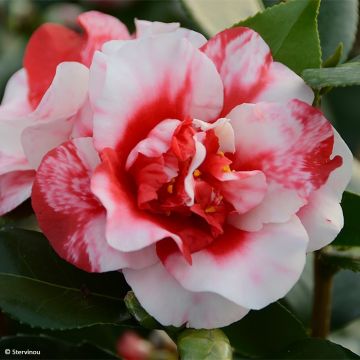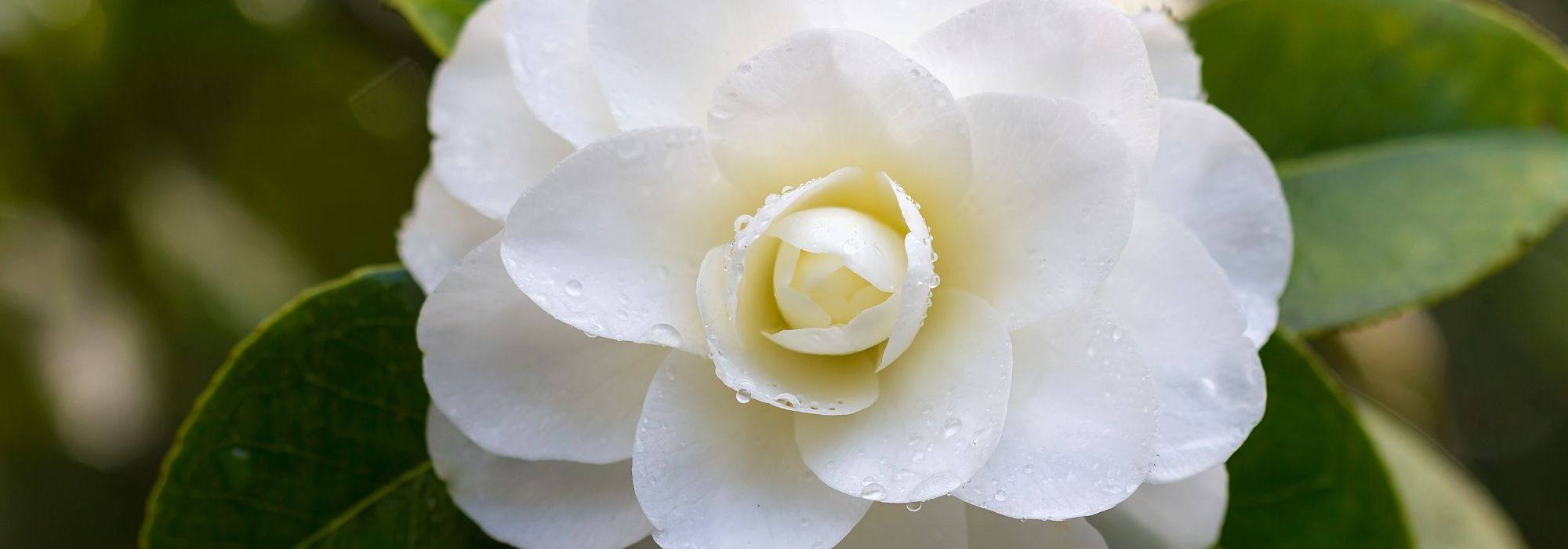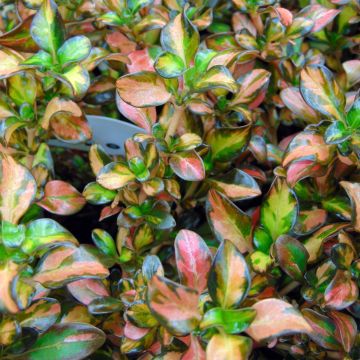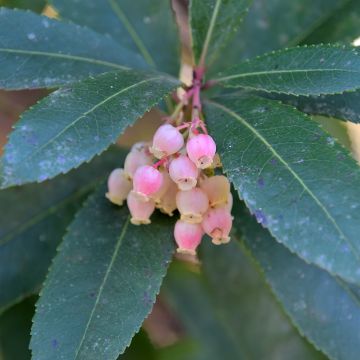

Camellia x reticulata Lila Naff
Camellia x reticulata Lila Naff
Camellia x reticulata Lila Naff
Special offer!
Receive a €20 voucher for any order over €90 (excluding delivery costs, credit notes, and plastic-free options)!
1- Add your favorite plants to your cart.
2- Once you have reached €90, confirm your order (you can even choose the delivery date!).
3- As soon as your order is shipped, you will receive an email containing your voucher code, valid for 3 months (90 days).
Your voucher is unique and can only be used once, for any order with a minimum value of €20, excluding delivery costs.
Can be combined with other current offers, non-divisible and non-refundable.
Why not try an alternative variety in stock?
View all →This plant carries a 24 months recovery warranty
More information
We guarantee the quality of our plants for a full growing cycle, and will replace at our expense any plant that fails to recover under normal climatic and planting conditions.
Would this plant suit my garden?
Set up your Plantfit profile →
Description
The Camellia reticulata 'Lila Naff' is a variety with irresistible charm, winning everyone over with its tender pink flowering. The flowers, exceeding 10 cm in diameter, start forming as early as February, standing out beautifully against the glossy dark green foliage. Semi-double, resembling somewhat anemone flowers or certain peonies, the wavy-petaled corollas are adorned with a yellow stamen heart, creating a lovely blend of hues. Reserved for mild climates, this beautiful medium-growing bush thrives in a semi-shaded bed in acidic and moist soil. In regions with too cold winters, it can be grown in a large pot to be brought indoors to a cool room in winter.
The Camellia belongs to the Theaceae family, famous for the tea produced from the leaves of Camellia sinensis. This plant family comprises only about ten genera, some of which are ornamental, such as Stewartia whose flowers clearly reveal their relationship with Camellias. The Camellia genus is best known for its species C. japonica, introduced to England in 1739 and highly popular in the first half of the 19th century before giving way to the Orchid trend. However, did you know there are 100 to 250 other botanical species (according to botanical classifications)? Camellia reticulata is one of them, highly sought after for the size of its flowers, likely the largest in the genus. The wild species originates from Yunnan, a province in southern China with a humid subtropical climate. It grows in mountainous areas up to an altitude of 3000 m, explaining its decent hardiness, down to about -10°C. In its native regions, it can grow into a small tree over 10 m tall, admired for its 10 to 12 cm diameter flowers.
'Lila Naff' was discovered in Slidell, Louisiana, USA, by Mrs. Ferol Zerkowski, amidst a seedling of Camellia reticulata 'Butterfly Wings'. Following the first bloom in 1958, the new variety was only officially registered in 1967. The bush has a rather upright habit and grows slightly faster than other C. reticulata varieties, forming after 10 years of planting a dense clump approximately 1.60 m tall by 1.20 m wide. Depending on the climate and growing conditions, the development can be greater; plants in Cornwall, southwest England, have reached 3 m in height and 2 m in width in the same time frame. The dense vegetation consists of dark green leaves with a glossy surface, elliptical with acuminate tips, measuring 10 cm long by 5.5 cm wide. This dark backdrop beautifully highlights the flowering period between February and April. The soft pink flowers consist of 15 petals forming a large corolla, 10 to 12.5 cm in diameter by 6 to 7 cm in height. The irregularly undulating petals, 6.5 x 7 cm, sometimes have a slight, shallow cleft at their tips. They surround a cluster of stamens, composed of white filaments supporting golden anthers (the terminal part containing pollen). This colour combination is very harmonious, giving the flowers an anemone, peony, or rose-like appearance, depending on individual references. While the flowers are not scented, they surely catch all eyes in late winter, particularly visible due to their size and light colour. A fantastic sight, exuding a romantic charm during a still somewhat grey time of year.
The Camellia reticulata 'Lila Naff' is a perfect choice for creating a delicate winter bed. Thriving in damp oceanic climates, you can grow it in a pot in regions with cold winters to bring it indoors after the growing season. In Brittany or other regions with acidic soil, you can integrate it into a bed alongside other plants with similar requirements for coolness and shade. The Sarcococca hookeriana, a small bush with a natural habit, will delight you with the delightful fragrance of its small white flowers blooming between December and March and will find its place in the foreground. Further back, the stunning and lesser-known Stachyurus praecox will surprise you with its long clusters of small yellow bells appearing at the same time as your Camellia's flowers. A deciduous plant, its foliage takes on beautiful autumnal hues that brighten your setting. In the rear of the bed, place one or two Hamamelis, or Witch Hazels, with their winter blooms in curious stretched filaments of yellow, red, or orange.
Plant habit
Flowering
Foliage
Botanical data
Camellia
x reticulata
Lila Naff
Theaceae
Cultivar or hybrid
Other Traditional Camellia
View all →Planting and care
The Camellia 'Adolphe Audusson' thrives in sunny climates, such as in Atlantic regions, but it performs best in partial shade, protected from scorching sun and sheltered from strong winds. Plant it in a cool, humus-bearing, acidic, and well-drained soil. Avoid planting the bush too deeply; the top of the root ball should be covered by 3 cm of soil. In winter, cover it with a 5 to 7 cm thick layer of mulch made of leaf compost and crushed bark. Beware of late frosts that can damage the flowers and buds. During dry periods, water the bush to prevent flower bud drop. It is recommended to plant the camellia in autumn in mild climates to promote proper root development and better flowering in the first year. In slightly colder winter climates, it is advisable to wait until spring and the end of frosts. In very cold areas where temperatures drop to -10°C or even lower repeatedly, it should be grown in a large container to overwinter indoors. Possible diseases include chlorosis due to excess limestone, brown spots caused by leaf burns from southern exposure, sooty mold, scale insects, and vine-plant beetles.
Pruning is not necessary but, if needed, should be done just after flowering, before the emergence of new spring shoots, and sparingly. Most camellia hybrids do not recover well from overly severe pruning.
Planting period
Intended location
Care
Planting & care advice
This item has not been reviewed yet - be the first to leave a review about it.
Similar products
Haven't found what you were looking for?
Hardiness is the lowest winter temperature a plant can endure without suffering serious damage or even dying. However, hardiness is affected by location (a sheltered area, such as a patio), protection (winter cover) and soil type (hardiness is improved by well-drained soil).

Photo Sharing Terms & Conditions
In order to encourage gardeners to interact and share their experiences, Promesse de fleurs offers various media enabling content to be uploaded onto its Site - in particular via the ‘Photo sharing’ module.
The User agrees to refrain from:
- Posting any content that is illegal, prejudicial, insulting, racist, inciteful to hatred, revisionist, contrary to public decency, that infringes on privacy or on the privacy rights of third parties, in particular the publicity rights of persons and goods, intellectual property rights, or the right to privacy.
- Submitting content on behalf of a third party;
- Impersonate the identity of a third party and/or publish any personal information about a third party;
In general, the User undertakes to refrain from any unethical behaviour.
All Content (in particular text, comments, files, images, photos, videos, creative works, etc.), which may be subject to property or intellectual property rights, image or other private rights, shall remain the property of the User, subject to the limited rights granted by the terms of the licence granted by Promesse de fleurs as stated below. Users are at liberty to publish or not to publish such Content on the Site, notably via the ‘Photo Sharing’ facility, and accept that this Content shall be made public and freely accessible, notably on the Internet.
Users further acknowledge, undertake to have ,and guarantee that they hold all necessary rights and permissions to publish such material on the Site, in particular with regard to the legislation in force pertaining to any privacy, property, intellectual property, image, or contractual rights, or rights of any other nature. By publishing such Content on the Site, Users acknowledge accepting full liability as publishers of the Content within the meaning of the law, and grant Promesse de fleurs, free of charge, an inclusive, worldwide licence for the said Content for the entire duration of its publication, including all reproduction, representation, up/downloading, displaying, performing, transmission, and storage rights.
Users also grant permission for their name to be linked to the Content and accept that this link may not always be made available.
By engaging in posting material, Users consent to their Content becoming automatically accessible on the Internet, in particular on other sites and/or blogs and/or web pages of the Promesse de fleurs site, including in particular social pages and the Promesse de fleurs catalogue.
Users may secure the removal of entrusted content free of charge by issuing a simple request via our contact form.
The flowering period indicated on our website applies to countries and regions located in USDA zone 8 (France, the United Kingdom, Ireland, the Netherlands, etc.)
It will vary according to where you live:
- In zones 9 to 10 (Italy, Spain, Greece, etc.), flowering will occur about 2 to 4 weeks earlier.
- In zones 6 to 7 (Germany, Poland, Slovenia, and lower mountainous regions), flowering will be delayed by 2 to 3 weeks.
- In zone 5 (Central Europe, Scandinavia), blooming will be delayed by 3 to 5 weeks.
In temperate climates, pruning of spring-flowering shrubs (forsythia, spireas, etc.) should be done just after flowering.
Pruning of summer-flowering shrubs (Indian Lilac, Perovskia, etc.) can be done in winter or spring.
In cold regions as well as with frost-sensitive plants, avoid pruning too early when severe frosts may still occur.
The planting period indicated on our website applies to countries and regions located in USDA zone 8 (France, United Kingdom, Ireland, Netherlands).
It will vary according to where you live:
- In Mediterranean zones (Marseille, Madrid, Milan, etc.), autumn and winter are the best planting periods.
- In continental zones (Strasbourg, Munich, Vienna, etc.), delay planting by 2 to 3 weeks in spring and bring it forward by 2 to 4 weeks in autumn.
- In mountainous regions (the Alps, Pyrenees, Carpathians, etc.), it is best to plant in late spring (May-June) or late summer (August-September).
The harvesting period indicated on our website applies to countries and regions in USDA zone 8 (France, England, Ireland, the Netherlands).
In colder areas (Scandinavia, Poland, Austria...) fruit and vegetable harvests are likely to be delayed by 3-4 weeks.
In warmer areas (Italy, Spain, Greece, etc.), harvesting will probably take place earlier, depending on weather conditions.
The sowing periods indicated on our website apply to countries and regions within USDA Zone 8 (France, UK, Ireland, Netherlands).
In colder areas (Scandinavia, Poland, Austria...), delay any outdoor sowing by 3-4 weeks, or sow under glass.
In warmer climes (Italy, Spain, Greece, etc.), bring outdoor sowing forward by a few weeks.

































































